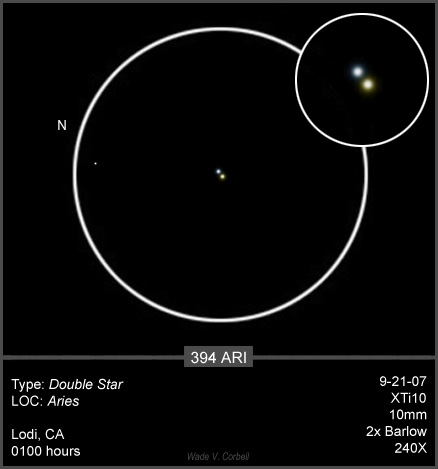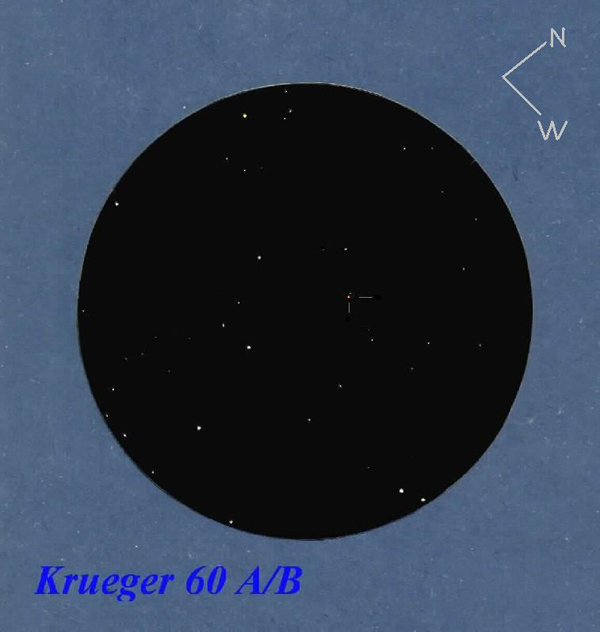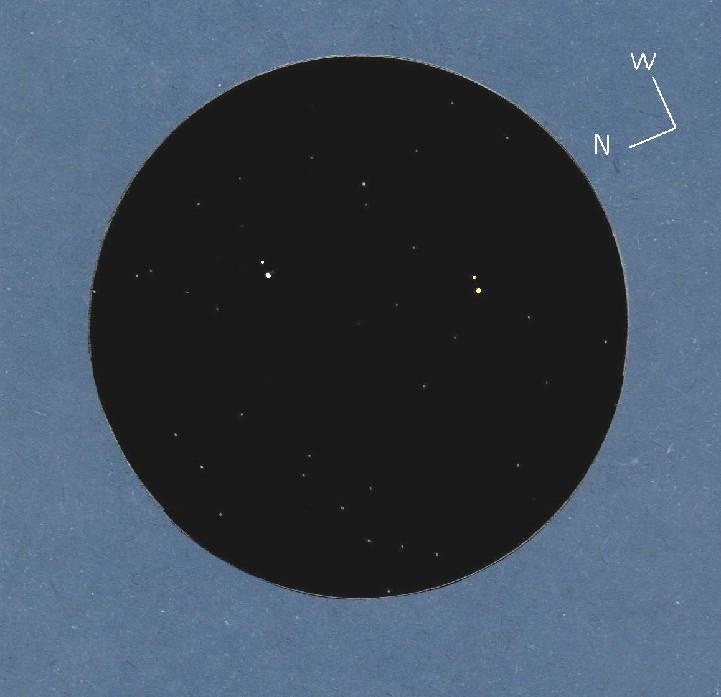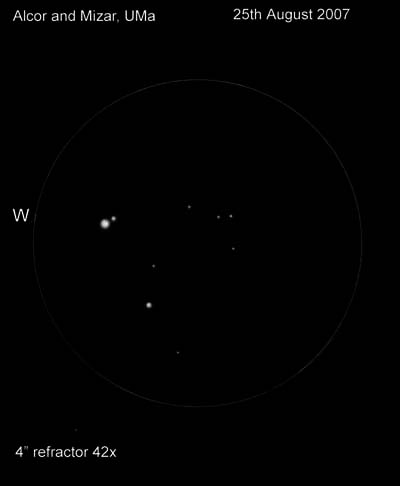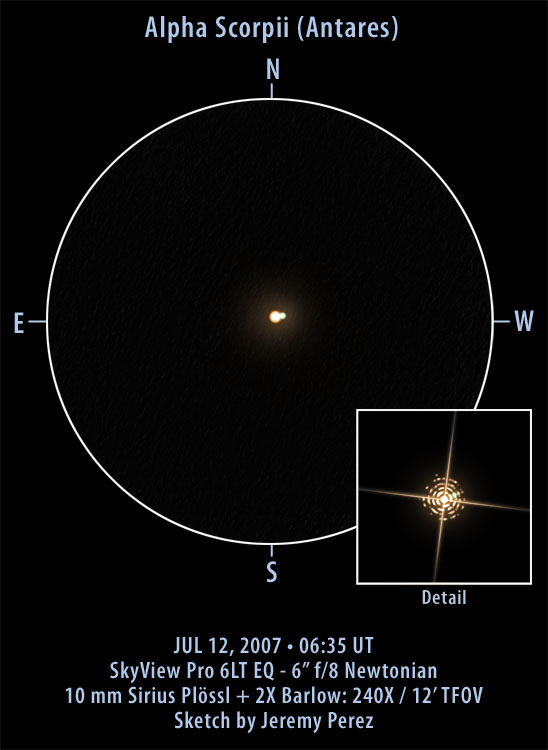
The goal of splitting the double star, Antares, had been tempting me for a while. I never seem to have the sort of seeing conditions that would make for a nice clean observation of this double. So I gave it a try on this less-than-perfect evening, and was successful in spotting the secondary star with my SkyView Pro 6LT (6″ f/8 Newtonian) at 240X. Antares’ primary star flickered like a coppery flame in the jumping air currents, so I had to be patient and wait for the ripples of diffracted light to show me the way. The secondary began to coalesce as a consistent lump in the fluttering kidney beans of orange light near the position of the primary star’s second diffraction ring. It’s color was hard to pick up, but gradually, I perceived what looked like a yellow-green tint. To help keep myself honest, I had not checked data on the secondary’s current position angle ahead of time, and it looked to be at a PA of about 280 degrees. Checking Brian Workman’s
double star calculator a couple days later gave a PA of 277° for 2007.5. The separation comes out to 2.18 arcseconds, which is fairly close for my ‘second diffraction ring’ sighting–that works out to 2.5 arcseconds in my scope.
When preparing my double star sketches for presentation online, I scan my original sketch to use as a template. Using that template, I then recreate the double star components using painting tools in Adobe Photoshop. See my Double Star Digitizing Tutorial for a detailed discussion of the process I use. After preparing that tutorial, I came up with a system for representing double star magnitudes consistently across all my sketches. A discussion of that system can be found at this link. Although these methods give me a consistent way to present my double star observations, they don’t handle very close doubles well. The proportions compared to the eyepiece field of view are just too tight (a discussion about this issue can be found at this link. Based on suggestions from experienced observers such as Eric Graff and Ed Zarenski, I decided to supplement my sketches of close double stars with an inset graphic showing how the diffraction patterns of the double stars interacted.
This sketch of Antares shows the most extreme example to date of how I’ve tried to convey the highly magnified optical interaction between two closely paired stars. Presenting something this complex was quite a learning experience for me, but I think it does a fairly decent job of rendering what I saw. This can be seen in the detail portion of the sketch. You just have to imagine all of that jumping around and moving from moment to moment. You’ll notice that I was fortunate enough to have the spider vanes in a position that didn’t interfere with the secondary star.
I made three different pencil sketches at the eyepiece, trying to describe how the secondary appeared within the jumping glare of its orange primary. These raw sketches can be seen below (note that they are shown prior to rotating the sketch to my usual position of North up):
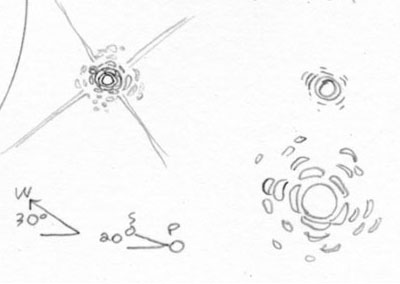
When creating this part of the digital sketch, I used a semi-soft paintbrush to plot the position of the primary star’s diffraction disc. I then used the circle selection tool to stroke progressively fainter rings around the primary. I have been using the excellent information from Ed Zarenski’s article “Understanding Resolution” to help me better proportion the position of these rings to the size of the primary star’s diffraction disc. After plotting these rings, I used a soft eraser tool to erase gaps in them to mimic what I had drawn in my sketches. I then came back with a small, soft paintbrush to slightly brighten up the second diffraction ring where I had noted the position of the secondary star. I then used coloring techniques described in the tutorial above to colorize the image.
It really was a beautiful and challenging sight. Watching the colorful light from a distant star give up it’s wave properties as it passes through the telescope and then tempt you to dissect its secrets is an enjoyable task. Give it a try sometime and see if you can identify the secondary in that bubbling mass of starlight. Someday I hope to observe and sketch this duo under much smoother seeing. Full details about the observation can be found here.
Jeremy Perez

